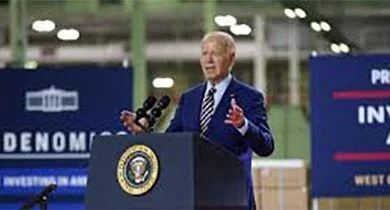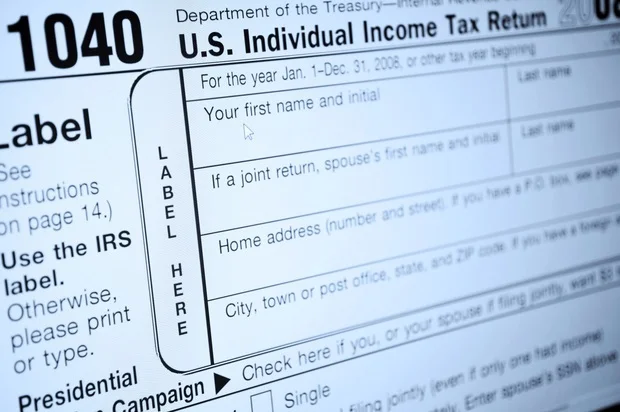3 Inconvenient Effects of Newsom’s $400 Gas Handout
California Governor Gavin Newsom wants to subsidize the gasoline industry. Newsom announced a proposal on Wednesday to pay Californians with registered vehicles $400 to help with the cost of rising fuel.
The proposal also includes several other channels to either subsidize or lower taxes on transportation for residents.
The proposal also includes:
$523 million to pause inflationary adjustment to gas/diesel excise tax
$600 million to pause part of sales tax on diesel for one year
$750 million in grants to incentive rail to offer free rides to Californians for three months— Ashley Zavala (@ZavalaA) March 23, 2022
This policy is explicitly an attempt to curb the increasing cost of gasoline caused by inflation and exacerbated by Russia’s war on Ukraine. While the tax “rebates,” the subsidies, or both may be supported by many, one can’t help but notice some tension with California’s general policy goal of phasing out all gasoline use by 2035.
But what will the impact of these handouts be? Simple supply and demand analysis can give us some clues.
The Effects of $400 Gas Handouts
First, let’s consider the effect of giving away “free” $400 debit cards.
1. Higher gas prices
The stated purpose of the $400 handout is to offset the increase in fuel prices. We can think of it as a one-time increase in income. However, as income increases, people are willing to buy more goods and services at any given price. Economists call this an increase in demand.
But when demand increases, all else equal, buyers are competing more for the same supply of gas. This competition drives prices up. How much? Simple supply and demand analysis can’t answer this, but we can be sure about a few things.
First, the larger demand won’t lead to prices so high that the people receiving $400 will be made worse off. But this highlights an interesting fact. While those who receive the handout will be better off, the rest of the world will also have to pay higher prices for the increase in demand generated by this policy.
Again, this price change may be small or even insignificant, but it isn’t the primary cost generated by the policy either.
2. Who pays?
There’s a famous saying in economics, “there ain’t no such thing as a free lunch.” The point of the saying is to highlight the fact that all policies use resources that could’ve been used for something else. This is known as an opportunity cost. In other words, the resources for the “free gas cards” have to come from somewhere. But where?
Well, the government of California has to pay for these with revenue, and the major source of revenue for state governments is tax dollars. In other words, Californians will be taxed for the cards. If you’re receiving the $400, this may not be a big deal, since the money is going to you.
But, remember, not every Californian is receiving the $400 handout. Only Californians with vehicles registered in California will receive one. So if you’re a Californian without a car? Sorry, your tax dollars are probably going to be paying for someone else’s tank of gas. This policy is essentially a handout to car registration holders at everyone else’s expense.
This seems especially insulting to Californians who’ve abandoned their vehicles and taken up biking to work to support Newsom’s zero emission vehicle dream. (More on that later.)
Interestingly, it seems unlikely that simply owning a car is a good proxy for whether higher fuel prices have affected someone. But perhaps the rebate is trying to undo harm created by taxes.
Newsom’s office has estimated the average Californian spends $300 on fuel taxes a year, so it could be argued this rebate is just returning that money. But, if that’s the case, why not simply suspend fuel taxes? This would certainly be a better proxy for how much fuel prices have affected someone than merely owning a car.
Considering California already runs budget deficits in the billions, however, it might not be present taxpayers who have to worry about footing the bill, but future taxpayers. When a government spends by borrowing money, that borrowed money must be paid back with interest in the future.
And how are these loans repaid? You guessed it—tax revenue. So Newsom is likely kicking the costs of scarce gasoline down the road to future Californians. Luckily for him, future Californians can’t vote, so this seems like a decent enough political strategy.
And what if California, with its already dwindling future population, won’t be able to pay when the bill comes due? It’s hard to say who bears the cost then, but if federal bailouts are used it may be the case that the rest of the country foots the bill for these debit cards.
Time will tell, but there ain’t no such thing as a free tank of gas.
3. More Fossil Fuel Pollution
One final effect is that subsidies to transportation that uses fossil fuels means more fossil fuels will be used. This is obvious, but it’s a point that bears repeating given that California is committed to eliminating vehicle emissions by 2035.
How will California do this? Well, the only way for the government to get people to use something (like gasoline) less is by raising the costs of using it.
One way government can raise the cost of using something is by taxing it. So, perhaps California will tax gas at increasingly higher rates until gasoline consumption is zero gallons.
But this is where the contradiction becomes apparent. Gasoline consumption in California is nowhere near zero gallons today, and yet, governor Newsom seems to have decided gas is too expensive.
I understand we aren’t at 2035 yet, but you would think that naturally higher gas prices would be a great thing for a California governor who wants to make gas so expensive it isn’t used at all. After all, aren’t we frequently reminded of the urgency of doing something about emissions today?
Some may argue that the government need not tax gasoline. They can simply ban it. But this doesn’t make the inconsistency disappear.
When the government bans something, they must either do so via fines or jail. In both cases, the government is imposing a cost (either monetary or non-monetary) to curb a particular behavior.
The inconsistency remains: Newsom wants gasoline to cost so much (either monetarily or non-monetarily) in 2035 that no one uses it, but in 2022 it costs too much so he wants to create a new handout program.
Finally, some may say California will accomplish this not with bans or taxes, but by switching fully to electric vehicles. Why don’t Californians do this today? If gas prices are hurting so much, why not buy a Tesla already?
Again, the answer is obvious. Switching to electric vehicles is costly.
If California politicians want to have a zero emission standard by 2035, they are going to have to impose a cost on citizens. However, apparently the cost imposed by gasoline is too high for Newsom already.
The inconsistent logic of Newsom here is hard to parse. He either must not think climate change is urgent enough to warrant allowing $6/gallon gas, or his commitment to zero emissions in 2035 is just a nice talking point.
In either case, the lesson is clear. California’s mess of high regulations and high taxes in the energy industry can’t be cured with a simple handout.
Content syndicated from Fee.org (FEE) under Creative Commons license.
Agree/Disagree with the author(s)? Let them know in the comments below and be heard by 10’s of thousands of CDN readers each day!




